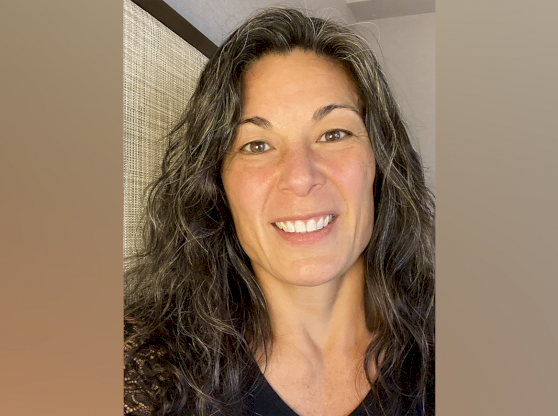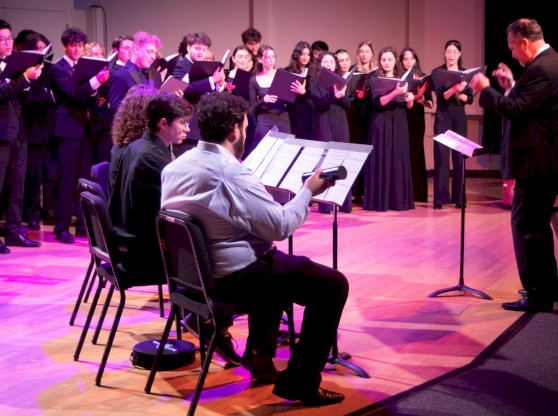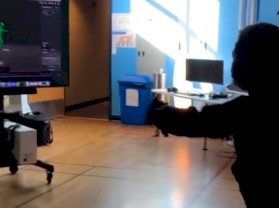Michael Dixon is an artist born and raised in San Diego, California. He received an MFA from the University of Colorado at Boulder. Currently, he is an associate professor of art at Albion College. Dixon is a well-established artist whose works have been displayed both nationally and internationally in a range of institutions and spaces. His choice medium is oil paint where his body of work explores “black” and “white” racial and cultural distinctions to depict a sense of belonging, or lack thereof. The complexities of his identity associations feature experiences of like-persons to construct a type of self-portrait. This discussion delivers some insights into what Dixon’s art practice entails and provides some understanding about what it can potentially look like to be a practicing artist.
Ashlyn Diaz is an artist born and raised in St. Petersburg, Florida. She is currently a junior drawing major at the School of Art + Art History. Her work is a collection of studies that involve both traditional and unconventional drawing materials, which sometimes translate into areas of study such as video and book arts. She is actively involved in the painting and drawing community as the secretary of the University of Florida’s Painting and Drawing Association.
AD: What advice do you have for young, emerging artists in and out of school?
MD: The advice I have for young artists is to make your art practice a priority, build an art community, and find supportive mentors. I would also learn and develop your business and writing skills.
AD: What will you speak about at the University of Florida? Can you describe your fellowship in Turkey and the series you developed there?
MD: I will share some of my work, influences, and personal narrative.
I received a Blanchard Fellowship from Albion College for $10,000. This is money targeted at faculty in their first three years of tenure for research purposes. I was awarded the fellowship in my third year at Albion College.
I have an African-American friend (Rasheeda) who’s married to a Turkish man (Ûtku). They have a small child (Atlas) and live in Mûgla, Turkey. Rasheeda is engaged with issues of race and identity in Turkey because of her biracial son. She was familiar with my work, invited me to Turkey to do a project, and I accepted.
I lived with Rasheeda's family for three months and interviewed 20 biracial black Turks about race and identity. I was interested in how they chose to identify and how others perceived them racially. After I collected the interviews, I painted the portrait of each participant.
AD: What is the relevance of your autobiography in regards to your artistic practice? Can you describe an example of a particular artwork or series that embodies this connection?
MD: My personal story is where much of the content for my work begins.
All of my work is self-portraiture whether I am in it or not. I am creating a picture of what it looks like, and feels like, to be biracial. I am adding my experiences to the visual culture. I am making conversations about race and identity more inclusive and more complicated. I can't say a single image is successful in accomplishing all (or any) of these items, but I believe as a whole, my work moves in these directions.
Titles are going to be where many hints of narrative play out. There is a black and white self-portrait from the series The Beautiful Struggle called, Fuck My Father, I Don't Know Him. Do I Look Like Him? It is an [image] of me pulling on my face, and the title finishes off my sentiment. I think this could be an example of autobiography.
AD: How do you begin a series of works?
MD: My process begins with reading and research followed by writing and sketching. I then take those ideas and turn them into a performance, which I document with photography. The photographs become the reference materials I use to make paintings.
AD: Which books and authors have had a significant impact on you and what are you currently reading?
MD: There have been different books for different reasons and at different times. Generally, this is a good list of books relating to my work:
- Bell hooks - Black Looks: Race and Representation
- Bell hooks - Teaching to Transgress: Education as the Practice of Freedom
- W.T. Lhamon Jr. - Raising Cain: Blackface Performance from Jim Crow to Hip Hop
- John Strausbaugh - Black Like You: Blackface, Whiteface, Insult and Imitation in American Popular Culture
- F. James Davis - Who Is Black? One Nation's Definition
- Joel Williamson - New People: Miscegentation and Mulattoes in the United States
- Kathy Russell, Midge Wilson, and Ronald Hall - The Color Complex: The Politics of Skin Color Among African Americans
- Audre Lorde - Sister Outsider
- Beverly Daniel Tatum - Why Are All the Black Kids Sitting Together in the Cafeteria?
- Joseph Boskin - Sambo: The Rise and Demise of An American Jester
- Paula S. Rothenberg - White Privilege: Essential Readings on the Other Side of Racism
- Jill Olumide - Raiding the Gene Pool: The Social Construction of Mixed RaceI am currently reading, A Giocometti Portrait, by James Lorde.
AD: Speaking of books, do you have a sketchbook habit?
MD: Yes
AD: Can you elaborate further on your sketchbook practice?
MD: Sure…my sketchbook functions more like a journal. I draw in it, collage in it, write in it, and collect things in it. The types of things I collect are quotes, poetry, pictures of art, and design elements I like from various magazines. It is the place where I write down all of my ideas large and small. I [use] my sketchbook for ideas when I need it.
AD: How does the works you have already accomplished influence the way you approach the most current direction of your work?
MD: The influence of my previous work is that I listen to where my work tells me to go. Many of my teachers and mentors would tell me this about their own work when I was a student. I didn't know what they meant for a long time, but now I can also say this about my work. The work tells me where to go. What that means to me is the process is intuitive; it takes time; it is a conversation; and the answers are not always readily available.
For a more in-depth conversation from Michael Dixon join the School of Art + Art History for his lecture at the University of Florida. Michael Dixon’s talk is sponsored by the Center for European Studies, the Turkish Student Association and the Painting and Drawing Association. Michael Dixon's public talk will take place on April 9, 2015 at 6:30 p.m. in Fine Arts Building, Room 103.



